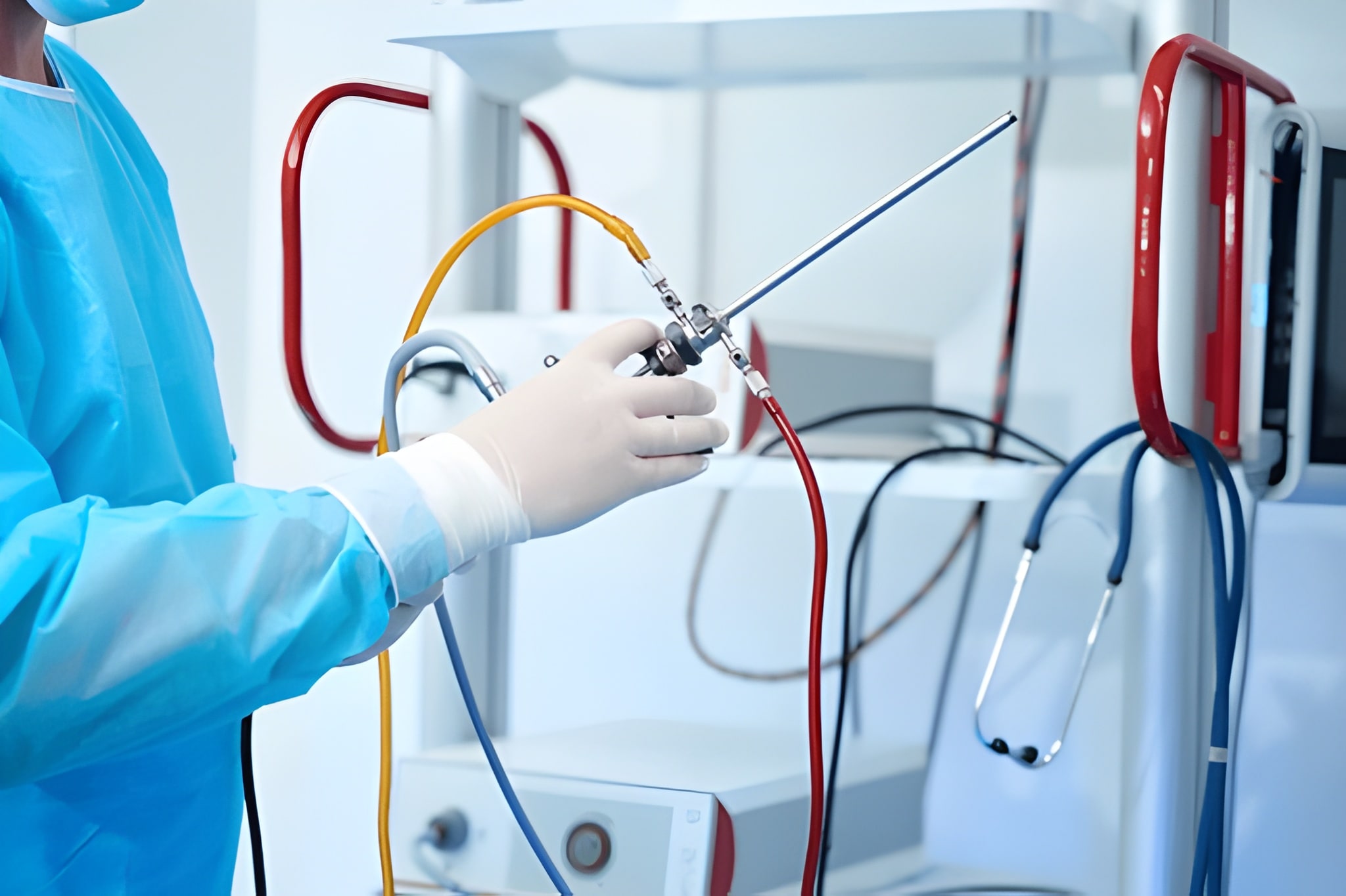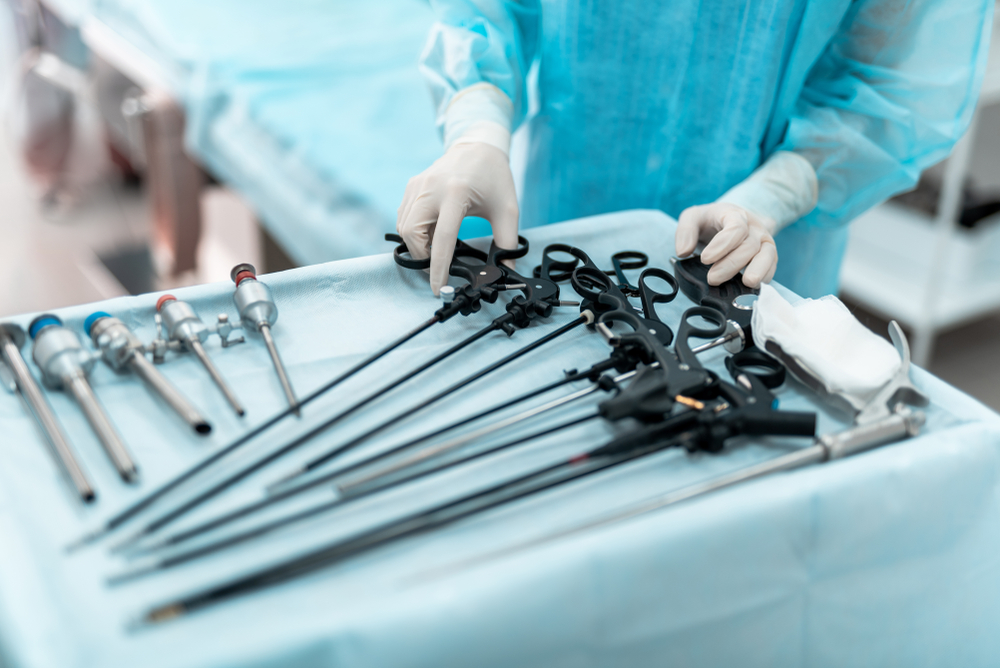Get Accurate Answers – Diagnose Your Condition Safely in Just One Procedure!
Are you suffering from unexplained abdominal or pelvic pain and unable to find the cause through regular tests? You’re not alone. Millions face diagnostic challenges, but the good news is that laparoscopic diagnostic surgery offers a safe, accurate, and minimally invasive solution to identify the problem without the fear of traditional surgery.
Our advanced diagnostic laparoscopy is a minimally invasive outpatient procedure that allows you to return to your routine within 2-3 days—no large cuts, minimal scarring, and no long hospital stays.
What Is Laparoscopic Diagnostic Surgery?
Laparoscopic diagnostic surgery, also known as diagnostic laparoscopy or exploratory laparoscopy, is a minimally invasive procedure that allows doctors to examine the organs inside the abdomen and pelvis directly. A small camera is inserted through tiny incisions, providing real-time visualization of internal organs to diagnose conditions that cannot be identified through imaging tests alone. If left undiagnosed, underlying conditions can severely affect your quality of life and daily activities.
Common Symptoms You Shouldn’t Ignore:
Chronic or unexplained abdominal pain Pelvic pain of unknown origin Abnormal masses or lumps detected on imaging Unexplained infertility in women Persistent nausea and vomiting without clear cause Abdominal swelling or bloating Abnormal bleeding or discharge Suspected endometriosis or adhesions
If you’re experiencing any of these symptoms, it’s time to take action.
What Conditions Can Be Diagnosed?
Diagnostic laparoscopy helps identify various conditions when other tests are inconclusive. Common conditions diagnosed include:
Endometriosis and pelvic adhesions, Ovarian cysts and tumors, Ectopic pregnancy Pelvic inflammatory disease, Abdominal adhesions from previous surgeries Appendicitis or other inflammatory conditions, Unexplained infertility causes, Cancer staging, and tissue sampling
Types of Diagnostic Procedures We Perform
- Gynecological Diagnostic Laparoscopy
Examines the uterus, ovaries, fallopian tubes, and pelvic organs to diagnose reproductive system conditions. - General Abdominal Laparoscopy
Visualizes the liver, gallbladder, stomach, intestines, and other abdominal organs. - Oncological Staging Laparoscopy
Determines the extent and spread of cancer for treatment planning. - Fertility Assessment Laparoscopy
Evaluates tubal patency, adhesions, and other factors affecting fertility.
Why Choose Laparoscopic Diagnostic Surgery Over Traditional Methods?
| Traditional Imaging/Tests | Diagnostic Laparoscopy |
|---|---|
| Limited visualization | Direct visualization |
| May miss small abnormalities | Detects even minor lesions |
| Cannot take tissue samples easily | Can perform a biopsy simultaneously |
| Multiple tests needed | Single comprehensive procedure |
| Indirect diagnosis | Direct accurate diagnosis |
| No treatment possible | Can treat some conditions immediately |
| Uncertainty may remain | Definitive diagnosis |
Laparoscopic diagnostic surgery is the modern, safer, and smarter choice for accurate diagnosis.
How Does Laparoscopic Diagnostic Surgery Work?
Our advanced minimally invasive procedure is simple, safe, and highly effective:
Step-by-Step Process:
- Anesthesia: General anesthesia is administered for your comfort
- Small Incisions: 2-3 tiny incisions are made in the abdomen
- Camera Insertion: A laparoscope with high-definition camera is inserted
- Systematic Examination: All abdominal and pelvic organs are carefully examined
- Tissue Sampling: Biopsies are taken if abnormalities are found
- Documentation: Images and videos are recorded for detailed analysis
Duration: 30–60 minutes
Hospital Stay: Same-day or overnight
Pain Level: Minimal to none
Benefits of Laparoscopic Diagnostic Surgery
- Accurate Diagnosis: Direct visualization provides definitive answers to unexplained symptoms.
- Minimally Invasive: Small incisions result in less pain and faster healing.
- Quick Recovery: Most patients return to normal activities within 2-3 days.
- Same-Day Discharge: Many patients go home the same day after a few hours of observation.
- Minimal Scarring: Tiny incisions leave barely visible scars.
- Therapeutic Potential: Can treat certain conditions during the same procedure.
- Tissue Sampling: Allows biopsy for histopathology when needed.
- Cost-Effective: Eliminates need for multiple inconclusive tests.
Post-Procedure Recovery & Care
Most patients experience a smooth and quick recovery. Here’s what to expect:
- First 24-48 Hours:
Mild discomfort at incision sites (manageable with medication), Shoulder pain from gas used during procedure (resolves quickly). Light diet initially, then normal diet as tolerated - Week 1:
Gradual return to routine activities Avoid heavy lifting and strenuous exercise, Normal diet can be resumed - Week 2 Onwards:
Complete healing of incisions Full return to normal activities, Follow-up for diagnosis discussion and treatment planning - Recovery Tips:
Walk regularly to help gas absorption Keep incision sites clean and dry Take prescribed pain medications as needed Avoid heavy lifting for 1-2 weeks Attend follow-up appointment for results discussion
Why Choose Us for Laparoscopic Diagnostic Surgery?
- Expert Diagnostic Team: Our surgeons are specially trained in diagnostic laparoscopy with extensive experience.
- Advanced Technology: State-of-the-art high-definition laparoscopic cameras and imaging systems.
- Comprehensive Evaluation: Thorough examination with detailed documentation and reporting.
- Safe & Hygienic Environment: Modern operating theater with international hygiene and safety standards.
- Patient-Centered Care: We understand your concerns and provide compassionate, personalized treatment.
- Complete Support: From consultation to diagnosis discussion and treatment planning, we’re with you every step of the way.
- Proven Results: High diagnostic accuracy with satisfied patients getting definitive answers.
Frequently Asked Questions (FAQs)
- Is laparoscopic diagnostic surgery painful?
The procedure is performed under anesthesia, and most patients report minimal pain that is easily managed with medication. - How long does the diagnostic procedure take?
The actual procedure takes approximately 30-60 minutes depending on findings. - Will I need to stay in the hospital?
Most patients are discharged the same day or after an overnight stay for observation. - When will I get my results?
Initial findings are discussed immediately, but biopsy results may take 5-7 days. - Can treatment be done during the diagnostic procedure?
In some cases, minor therapeutic procedures can be performed simultaneously if findings allow. - Is diagnostic laparoscopy safe?
Yes, it’s a very safe procedure with minimal risks when performed by experienced surgeons. - What is the cost of laparoscopic diagnostic surgery?
The cost varies based on the complexity and extent of the examination needed. Contact us for a personalized consultation and transparent pricing. - How accurate is diagnostic laparoscopy?
It’s considered the gold standard for diagnosing many abdominal and pelvic conditions with very high accuracy. - Does insurance cover the procedure?
Most insurance plans cover medically necessary diagnostic procedures. Please check with your provider or contact us for assistance. - What should I do after getting my diagnosis?
Our team will discuss findings with you and create a comprehensive treatment plan based on the diagnosis.
Don’t Let Uncertainty Control Your Life – Take Action Today!
Living with unexplained pain and uncertainty is not normal, and you don’t have to suffer in silence. Thousands have already received accurate diagnoses through our advanced laparoscopic diagnostic surgery.
Take the First Step Towards Clear Answers!
Your health and peace of mind are our priority. Schedule your consultation today and experience the difference modern diagnostic technology can make.


